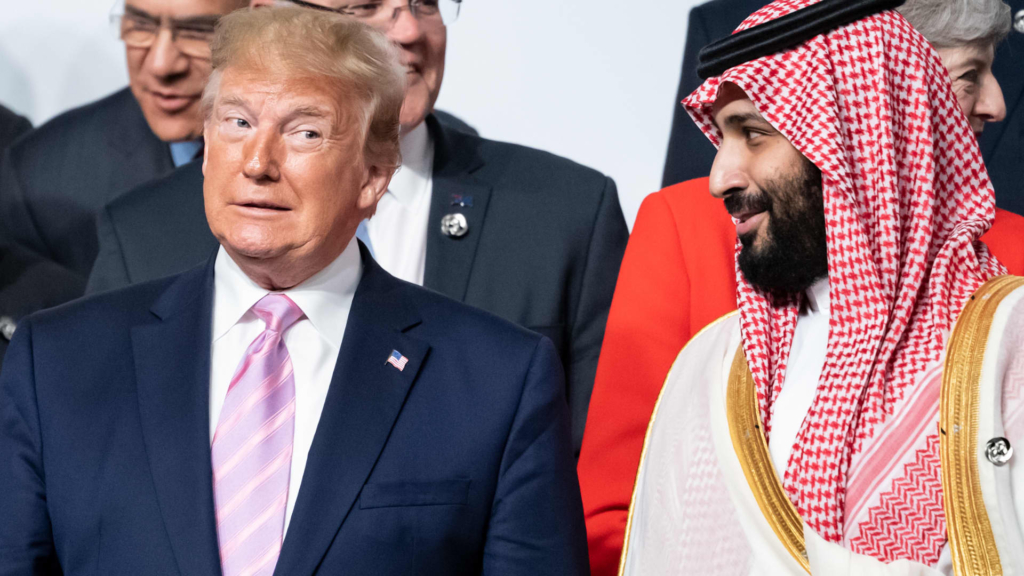DUBAI, United Arab Emirates — Economists and regional investors assert that the affluent Arab Gulf states are better equipped than many other global regions to navigate the economic implications of U.S. President Donald Trump’s tariffs. However, a volatile oil market may jeopardize the budgets and spending initiatives of certain countries.
Comprising Saudi Arabia, the United Arab Emirates, Bahrain, Kuwait, Oman, and Qatar, the Gulf Cooperation Council (GCC) holds approximately $3.2 trillion in sovereign financial assets, representing 33% of the global total, as stated by GCC Secretary-General Jasem Mohamed Albudaiwi.
The GCC also possesses around 32.6% of the world’s proven crude oil reserves, according to data from the Statistical Center of the Cooperation Council for the Arab States of the Gulf.
This significant asset positions it as both beneficial and susceptible to the policies of the Trump administration, which has long encouraged OPEC, led by Saudi Arabia, to increase oil production to mitigate U.S. inflation by lowering oil prices.
Nevertheless, falling oil prices could substantially affect the budget deficits and financial strategies of these nations, whose economies, despite attempts at diversification, continue to predominantly depend on oil revenues.
Strengthening Ties with Trump
Ben Powell, BlackRock’s chief investment strategist for Asia-Pacific and the Middle East based in Abu Dhabi, noted that the region’s strong rapport with Trump enhances its negotiating position regarding potential tariffs. Additionally, nations within the GCC have broadened their roles in global diplomacy; a salient example is Riyadh’s facilitation of peace talks aimed at concluding the Russia-Ukraine conflict, further increasing their prominence in Washington.
“I do think the Middle East, with the deep relationship with the U.S. that they have, should come out okay,” Powell remarked during an appearance on Finance Newso’s “Access Middle East” on Monday.
“I think we’re all going to be swept into the maelstrom over the next short period of time. That’s inevitable. But the Middle East, with the balance sheet strength that they have, with the energy support that they still have, providing funding on a near ongoing basis … for me, the Middle East — maybe not today, but over time — should be a relative winner within that mix” regarding emerging markets, Powell added.
Monica Malik, chief economist at Abu Dhabi Commercial Bank, highlighted that the United States is not a primary export market for the region, which could mitigate the immediate effects of tariffs. “The GCC should be in a relatively favourable position to withstand headwinds, especially the UAE,” she reflected in a report published Friday.
While the region must contend with a blanket 10% tariff and earlier tariffs on foreign steel and aluminum—products exported by both the UAE and Bahrain—Malik noted that the direct impact is expected to be manageable, as the U.S. accounts for roughly 3.7% of the GCC’s total exports projected for 2024.
Risks to Spending Plans
The outlook for oil prices is critical for the budgets and future spending agendas of Gulf states, particularly Saudi Arabia. The kingdom is heavily investing in ambitious mega-projects under Vision 2030, Crown Prince Mohammed bin Salman’s initiative to diversify the economy away from fossil fuels. Ironically, the success of this plan is closely tied to oil revenues.
As of Wednesday, global benchmark Brent crude was trading at $61.44 a barrel, reflecting a nearly 17% decline year-to-date. The situation intensified following OPEC+’s unexpected announcement to accelerate planned increases in crude production, which has bolstered global supply.
The International Monetary Fund estimates that Saudi Arabia needs oil prices above $90 a barrel to achieve budget equilibrium. Recently, Goldman Sachs revised its oil price forecast for 2026 to $58 for Brent and $55 for WTI, significantly lowering its previous estimates from just last week.
“We face downside risks to our Brent forecast for 2025 due to weakening global demand and increasing supply. However, we await more market clarity before making further adjustments,” Malik highlighted in her comments to Finance Newso on Monday. Notably, OPEC+ plans to reassess oil production levels again in May, and she anticipates that the group will reconsider its production strategy if crude prices remain stagnant or decline.
“Our greatest concern would be a sharp and sustained oil price fall, which would necessitate a reassessment of spending plans — both government and off-budget — including capital expenditures, while also potentially impacting banking sector liquidity and broader economic confidence,” Malik cautioned.


























